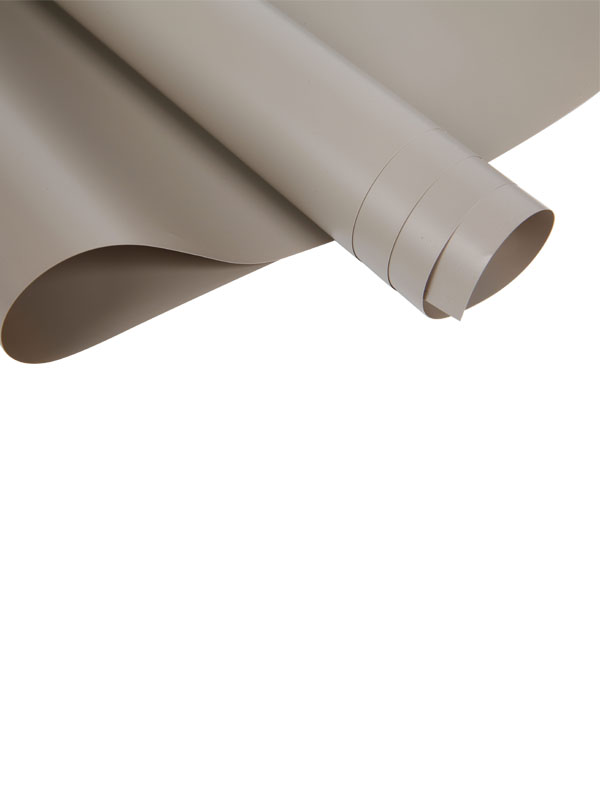PVC ceiling film is a flexible, lightweight sheet made from high-quality PVC material. It is designed to be stretched over a frame or suspended structure, creating a smooth, even surface. The film is typically installed a few centimeters below the original ceiling, allowing it to cover imperfections or integrate with lighting systems and other ceiling elements. Available in a range of finishes—such as matte, glossy, satin, and metallic—the material can mimic different textures and styles, making it highly versatile in terms of interior aesthetics.
One of the biggest advantages of PVC ceiling film is its ability to adapt to different styles and preferences. It comes in a variety of colors, patterns, and finishes, enabling homeowners and designers to achieve the desired look. Whether it's a sleek modern appearance with a high-gloss finish or a subtle, elegant style with a matte texture, PVC ceiling film can cater to a wide range of interior themes. Additionally, custom prints or designs can be incorporated to add a personal touch or create unique visual effects.
PVC ceiling film is resistant to moisture, mold, and mildew, making it suitable for humid environments such as bathrooms and kitchens. Its durable nature means that it can last for many years without showing signs of wear and tear. Unlike traditional ceiling materials, such as plasterboard, it does not crack, peel, or require frequent repainting. Moreover, the film is anti-static, reducing the accumulation of dust and making it easier to maintain.

PVC ceiling film is remarkably easy to clean and maintain. Its smooth surface allows for the easy removal of dust, stains, or marks using a damp cloth or a mild detergent. Because the film is water-resistant, it can be safely used in wet areas without the risk of damage. The low-maintenance requirements make it a practical choice for busy households and commercial spaces.
Installing PVC ceiling film is a straightforward process that does not produce dust or debris, making it an ideal choice for renovations. The film is stretched over a perimeter frame attached to the walls, with heat applied to make it flexible enough to stretch into place. This process takes only a few hours, depending on the size of the space. The installation can be carried out without significant disruption, which is a major advantage for commercial properties that need to minimize downtime.
By creating an additional layer below the original ceiling, PVC ceiling film can help improve a room's thermal insulation. The air gap between the film and the original ceiling can reduce heat loss, enhancing the energy efficiency of a building. Additionally, reflective PVC films, such as those with a glossy finish, can help distribute natural or artificial light more effectively, reducing the need for additional lighting.
Matte PVC ceiling film provides a soft, understated look that is ideal for spaces where a subtle, elegant appearance is desired. It is less reflective than glossy finishes, making it suitable for areas where bright lighting is not required. Matte finishes are commonly used in living rooms, bedrooms, and other residential spaces where a relaxed atmosphere is preferred.
Glossy PVC ceiling film is highly reflective, giving the illusion of a larger, brighter space. This finish is perfect for modern interiors and can make rooms appear more spacious by reflecting light. Glossy films are often used in commercial settings, such as restaurants, hotels, and showrooms, to create a dramatic and sophisticated effect.
Satin finish PVC ceiling film offers a balance between matte and glossy finishes. It has a subtle sheen that provides a refined look without being overly reflective. Satin finishes are versatile and suitable for various applications, blending well with both contemporary and traditional interior styles.
For those looking to make a bold statement, metallic or textured PVC ceiling films can add a unique touch to any space. These films mimic materials such as metal, wood, or fabric, providing a luxurious feel. Metallic finishes can be used in commercial and industrial settings to enhance the overall aesthetic, while textured films can create a cozy and stylish atmosphere in residential spaces.
The installation of PVC ceiling film involves a few key steps:
Preparing the Room: The room is measured, and a perimeter track is installed around the edges of the walls.
Heating the Film: The PVC film is heated to make it more flexible. It is then stretched and secured to the perimeter track.
Final Adjustments: Once the film is in place, any excess material is trimmed, and adjustments are made to ensure a smooth and even surface.
Integration with Lighting and Fixtures: Lighting systems, ventilation, or other ceiling fixtures can be integrated into the PVC ceiling, providing a seamless finish.
Applications of PVC Ceiling Film
PVC ceiling film can be used in a variety of settings:
Residential Spaces: Ideal for living rooms, bedrooms, kitchens, and bathrooms due to its moisture-resistant and low-maintenance qualities.
Commercial Properties: Suitable for offices, retail stores, hotels, and restaurants where a stylish and durable ceiling solution is needed.
Industrial Settings: Can be used in factories or warehouses to cover ceilings and enhance the aesthetic of large spaces.
Healthcare Facilities: PVC ceiling film’s anti-bacterial and moisture-resistant properties make it suitable for use in hospitals and clinics.
Considerations for Choosing PVC Ceiling Film
When selecting PVC ceiling film, it is essential to consider factors such as the room's purpose, desired aesthetic, lighting conditions, and budget. Additionally, working with a professional installer ensures proper fitting and long-term performance.

 English
English русский
русский Français
Français Español
Español عربى
عربى







